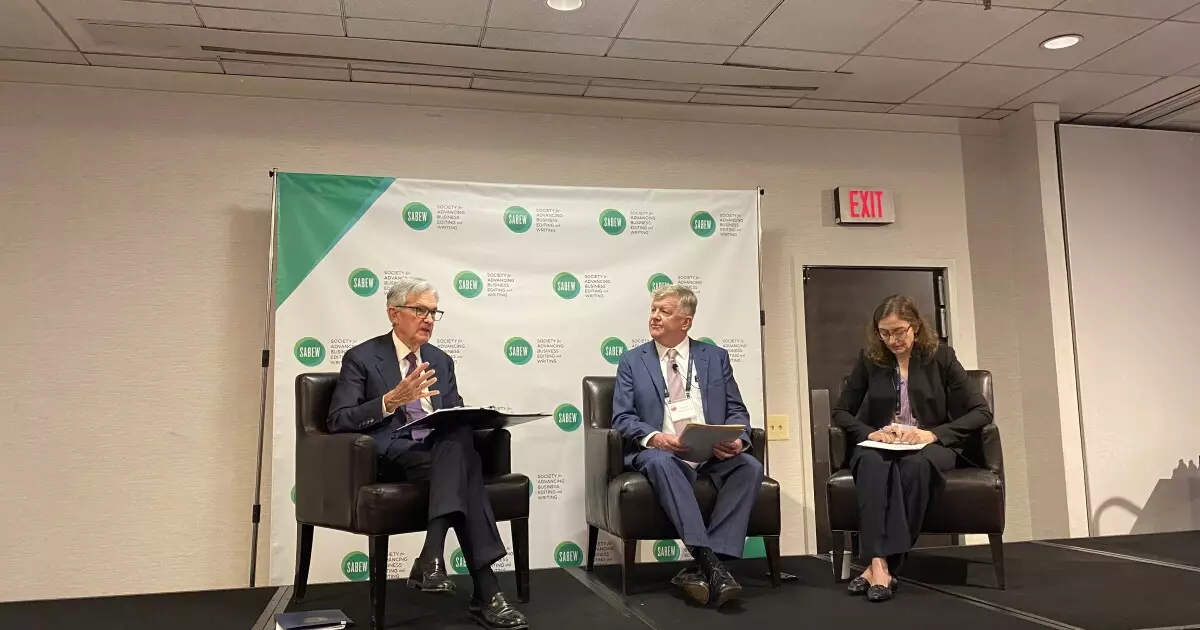As the Trump administration advances its rather radical policies surrounding tariffs, immigration, and government expenditures, the uncertainty surrounding the U.S. economy has reached an unprecedented level. Federal Reserve Chair Jerome Powell’s cautious approach reflects a broader sentiment among economists and financial institutions. While maintaining a non-political stance, Powell acknowledges that the consequences of these changes are still largely undefined, necessitating a “wait-and-see” strategy from the Fed regarding interest rates. This cautiousness can be seen as prudent, but the issue lies in the practical implications of such inaction. The broader economic landscape is poised at a tipping point, where clarity is essential yet frustratingly absent.
The dangers of prolonged uncertainty are manifold. While Powell lauds current economic indicators—such as moderate inflation rates and payroll growth—these figures may betray a deeper vulnerability beneath the surface. The significant concerns that stem from the administration’s tariff policies highlight the fragility of our economic fabric. As these tariffs take hold, they are likely to disrupt not just trade relationships, but also domestic pricing strategies. An environment that has historically thrived on consumer spending may soon see a retrenchment in spending habits, particularly from households reluctant to pay inflated prices.
The Dilemma of Consumer Sentiment
Consumer sentiment serves as a critical bellwether for economic vitality, yet signs indicate a considerable paradox. Despite Powell’s assurances that inflation is indeed moderated, consumers continue to grapple with enduring elevated prices. The psychological weight of higher costs cannot be easily dismissed; it creates an atmosphere of anxiety that can paralyze consumer confidence. Powell himself acknowledges this tension, emphasizing that while households have shown a tendency to keep spending—even during tough times—this behavior cannot be relied upon indefinitely.
This spending, often out of necessity rather than fearlessness, underscores a troubling disconnect. Households pinching pennies in moments of collective unease may contribute to a tentative economic environment, and it raises questions about the sustainability of growth. The complexity of consumer behavior defies simple predictions, complicating the Fed’s efforts to create policies that can effectively stimulate a consistently robust economy.
A Delicate Balance: Employment vs. Inflation
A pillar of Powell’s commentary is the existing balance in the labor market. With payroll figures exceeding expectations, he expresses cautious optimism. In a sense, this optimism may heighten concerns that rising payrolls could lead to upward pressure on wages, which then feed back into inflation. The balancing act between sustaining employment levels and keeping inflation anchored at 2% becomes increasingly intricate in this climate. With each policy decision made in Washington, the tension between growth and inflation tightens—a miscalculation could tilt the scales dramatically.
Moreover, the looming threat of stagnant wage growth while prices rise unexpectedly could cultivate not just economic frustration, but widespread discontent. Addressing this challenge must become a priority if the administration wishes to maintain any semblance of public support.
The Stakes for the Future Federal Reserve Leadership
As Powell’s term approaches its conclusion, the stakes only seem to heighten. With whispers of potential successors already echoing through economic circles, the quest for a capable leader at the Federal Reserve is paramount. If the incoming leadership bears a partisan bias, as hinted by Powell’s explanation of his neutral-hued necktie serving as a symbol of his non-political position, the implications for monetary policy could be profound. A Federal Reserve that swings wildly from one ideological extreme to the other only contributes to the already chaotic economic climate, fuelling further uncertainty.
The examination of Powell’s remarks begs the question: Are we truly primed for recovery, or are we merely basking in a temporary illusion of stability? Navigating the complexities behind economic indicators requires not just diligence but a willingness to embrace muted realities—an aspect the current administration seems ill-prepared to confront.
As we inch closer toward clearer indicators of economic stability, the interplay between policy and its resultant consequences weighs heavily on the minds of both consumers and policymakers. A robust dialogue built on an honest appraisal of America’s economic landscape is necessary if we hope to emerge from this precarious juncture unscathed.

